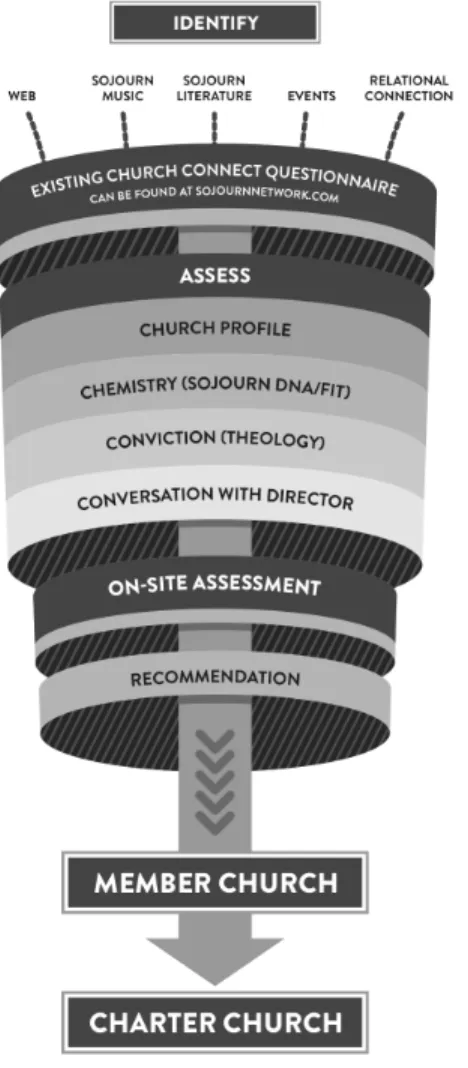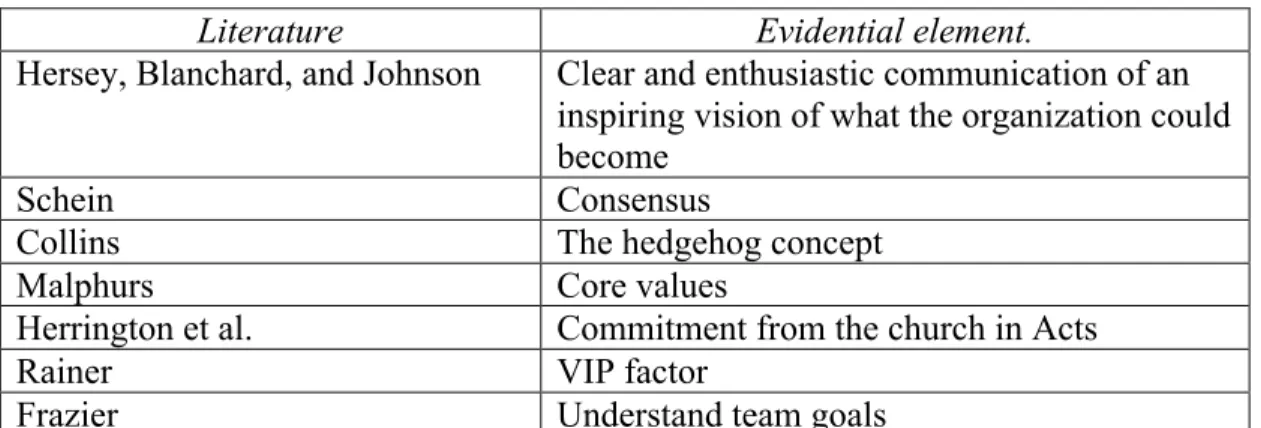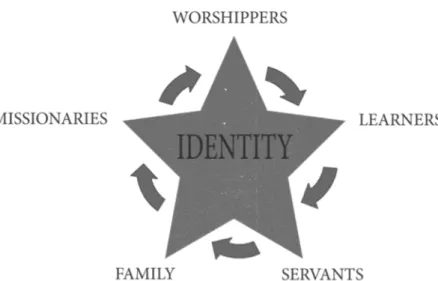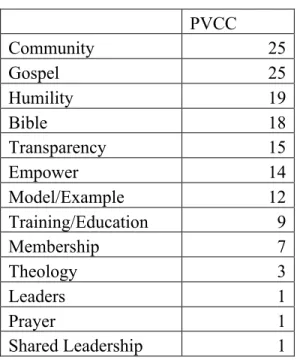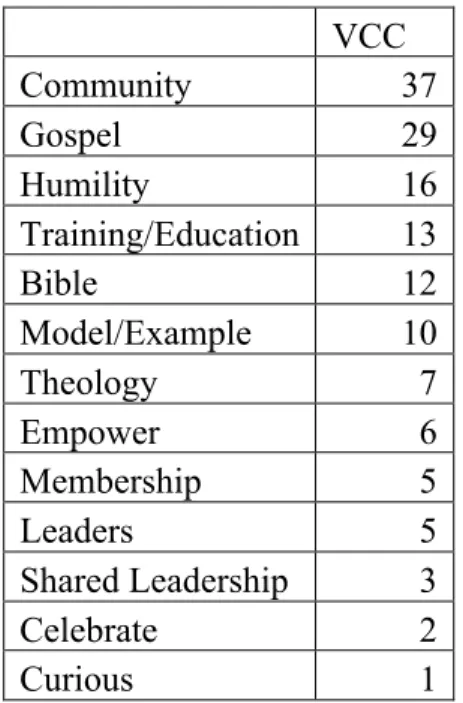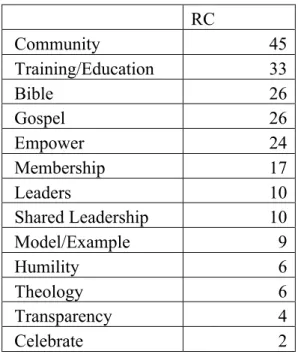I also want to thank all my professors and those involved in the process. I am so happy to be part of the great group of men in my cohort. I am blessed to be part of a church that loves God, loves the gospel and loves the local church.
I am grateful to my son, Jeremias, for his patience when dad had to "work at school." I cannot begin to express how wonderful my wife, Jennifer, has been through this process. My prayer is that this work will be an encouragement to those struggling for healthy culture in churches and a catalyst for change to those wondering how to develop a healthy culture.
INTRODUCTION
Understanding organizational culture is critical to understanding the need for a set of best practices for intentionally creating healthy culture in the local church. 3This ambiguous nature of organizational culture is something that will be discussed in the section "What is Organizational Culture?" below. Although the formal study of organizational culture emerged largely in the 1980s, the focus was on the church.
One of the primary goals of this study was to observe cases with a healthy organizational culture. The research exposed the elements that led to the intentional development of a healthy organizational culture within the sampled churches. Further, it was the presence of markers of healthy organizational culture in local churches.
A multiple case study was conducted using sample cases to explore the common factors that led to the intentional creation of a healthy organizational culture in a local church.
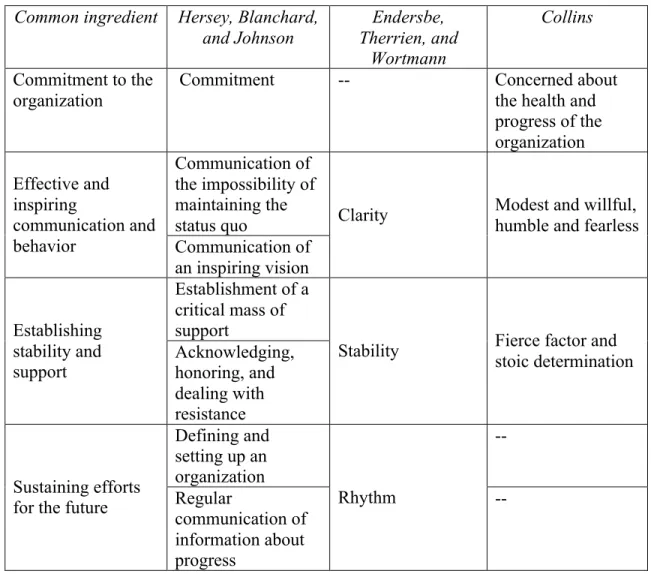
Preparation
Churches that are part of a church planting network whose purpose is to create healthy churches. Churches that have the same theology, politics and/or size as the examples. The content analysis was used to examine the available content (or "texts") to provide data that could answer the research questions.17 The instrumentation consisted of three main phases: data preparation, data collection, and data analysis (see Figure 1).
Obtain permission to examine the physical aspects of the church, including facilities, signage, physical location and worship spaces. Contact the local church case and arrange the conduct of the interview part of the case study. To provide the respondent or respondents from the local church with the interview protocol, including the research questions, prior to the interview portion of the case study. 19.
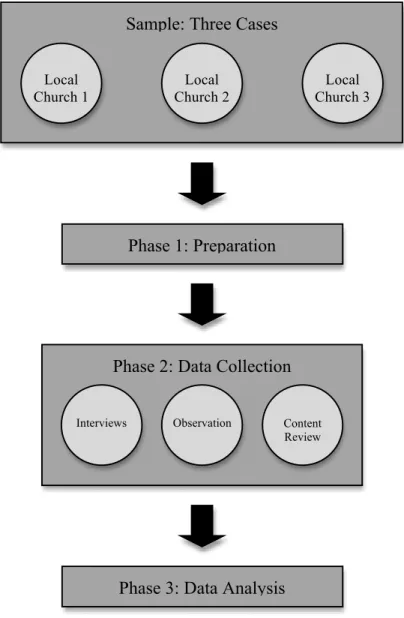
Data Collection
The data collection in this research design was deliberately comprehensive.26 The intention of using multiple sources of data collection was to create triangulation in the research results.27 Triangulation provided the opportunity to add clarity to the data analysis and validity to the results. Observe all organizational elements in the church with interest in any potential data that may arise. Searching the organizational elements for any and all data that could have contributed to the conscious creation of a healthy culture in the church.
Keeping a detailed set of field notes for each research contact with the local church case. Determining what additional data collection was necessary as a result of what has been revealed in the initial data collection. To ask the questions that were asked of the respondent or respondents before the interview part.
Asking the question semi-structured so that the respondent can determine the direction of the answer. Reviewing the tapes of the interview and taking a detailed set of field notes from the local church business interview, which can be used as a guideline for any additional data collection. Determine what further data collection is needed as a result of what was revealed in the first data collection.
In addition to the protocol, the following data collection questions helped guide the overall data collection process:30. Is there anything significant that stands out in the interviews or observations that may prompt further data collection. Are there patterns developing in the data collection process that need to be further explored through additional interviews or observation.
Data Analysis
Borg, Applying Educational Research (New York: Longman, 1999) describe the purpose of purposive sampling by stating, "The purpose of purposive sampling is to select individuals for case study who are likely to be 'information rich.' in relation to the Applicants'. 10 See section titled “Our Mission,” Pleasant Valley Community Church, accessed August 12, 2015, http://pleasantvalley.cc/about/our-mission-2/. They have what they call a "neo-liturgical" style, which they also refer to as "history-shaped worship." The musical style is a mixture of hymns, gospel music, rhythm and blues and indie rock.
Much of the data that was collected from Pleasant Valley was steeped in the idea of community. We will preach from, we will teach from the Bible.” Their bylaws reveal their position on the Bible, saying “The Holy Scriptures, both Old and New Testaments, are. Community and the gospel were mentioned often and were powerful in creating the culture of Veritas.
The website declares, "Our Gospel identity is our full identity." The gospel is truly a core component of the people and culture of Veritas. When asked what elements he was trying to instill in the culture at that point, Nye replied, "The biggest one I'm constantly trying to develop is a sense of humility." When asked what were the biggest factors in creating the culture that the church had, Nicol responded. The website says, "We are called to clothe ourselves in humility and as we hold fast to our doctrinal convictions, we do so out of humility." The membership covenant calls members more explicitly to humility by saying: “I join to practice the humility and sacrificial attitude of Christ by considering the needs of others, not.
The theme of training and educating church people was an additional practice that emerged from the data. I think that's the key." The church believed so much in the idea of teaching its people that they have created a training called. Nye said, "We want to constantly put the biblical mission before everybody all the time." Nicol added that they are "repeatedly presenting the Bible as an authoritative document." The covenant of church membership also supports this commitment.
Nicol said: "We will try to be an example to the disaffected crowd [the change needed]." The example of the leaders was a useful factor in creating the culture of Veritas. The church's website says: “The Bible must be believed, as God's command, in all that it teaches; obey, as God's command, in all that it requires;.
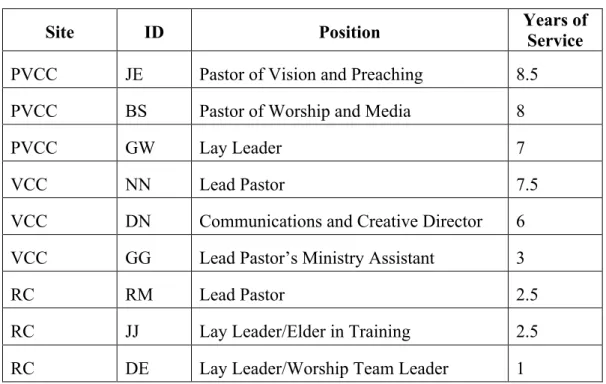
CONCLUSIONS
The focus on the Bible was glaring throughout the research in the three local churches. The literature review determined that one of the markers of a healthy church culture is "committed to the biblical mission."8 Local churches are. The fact that biblical mission is so instrumental to the health of the culture itself shows that a healthy culture in the test churches emanated from their focus on the mission of the Bible.
Community is by far the most prevalent factor in the creation of the culture of these three churches. The leaders of the three studied churches made a deliberate effort to shape the culture of their churches. Schein, "The Role of the Founder in the Creation of Organizational Culture," in Reframing Organizational Culture, ed.
Creating a gospel identity in the church is equivalent to the culture of the model churches. They believe in the value of the Bible for their people and for their culture. The first benefit is that the people of the church will feel more united with each other.
As has been said, the leaders contributed to the development of the culture by teaching and training the people. Train and educate people in the church in how the leaders would like to shape the culture. The trial churches believe that the people of the church are instrumental in the creation of the culture.
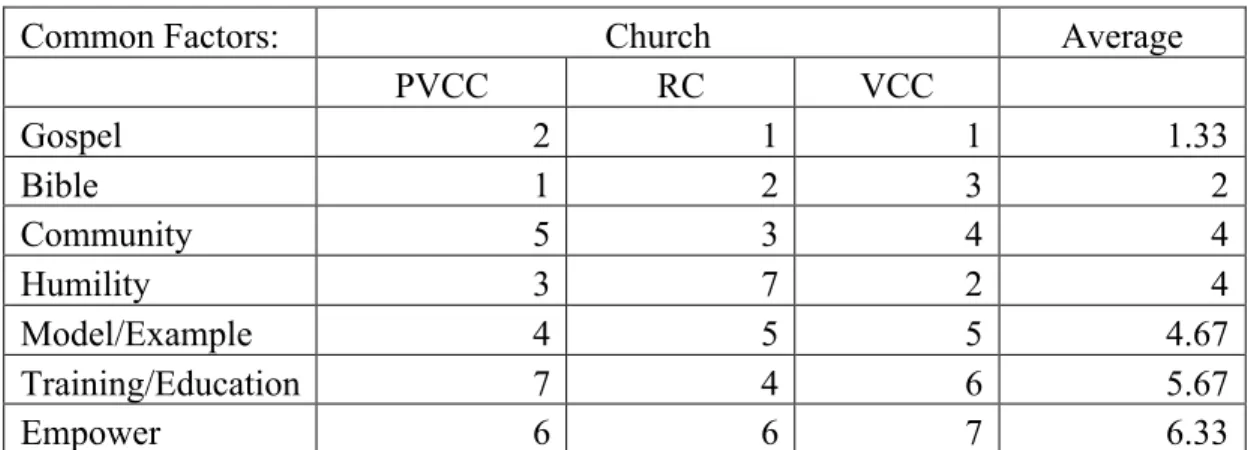
ADDITIONAL FIGURES
A Comparative Analysis of Leadership Competencies and Characteristics for Vocational Ministry Leaders as Identified by Ministry Professionals.” EdD thesis, The Southern Baptist Theological Seminary, 2004. The Relationship between Pastoral Influence Tactics, Follower Outcome Levels, and Types of Congregational Change. PhD diss., The Southern Baptist Theological Seminary, 2009. Ministry staff as identified by senior pastors, staff members and church lay leaders.” EdD thesis, The Southern Baptist Theological Seminary, 2007.
Developing a leadership team for the Purchase Area Baptist Association, Benton, Kentucky.” DMin Project, The Southern Baptist Theological Seminary, 2012. Shaping Church Culture: Table Fellowship and Teaching in Luke-Acts.” EdD Thesis, The Southern Baptist Theological Seminary, 2015. Natale, Nicholas Alfred, “Relationship Between Senior Pastor Attitudes Towards Organizational Change and Church Growth Factors.” EdD Thesis, The Southern Baptist Theological Seminary, 2007.
Investigating a Church Culture of Multiplication: A Multiple Case Study. DMin Project, The Southern Baptist Theological Seminary, 2013. Organizational Culture Assessment: Developing a Descriptive Test Tool.” PhD diss., University of Alabama at Huntsville, 2003. The role of the founder in creating organizational culture.” In Reframing Organizational Culture, edited by Peter J.
In recent years, church culture has evolved out of the broader debate about organizational culture. This research was qualitative in nature, using case study and content analysis as the two primary components of the instrumentation. Through this study of three local church cases, seven practices emerged that can help church leaders intentionally create a healthy culture in the churches they serve.
